On day 4 of our self-drive in South Korea, we departed from Jeonju to our next destination, Gyeongju. The distance is about 100 km so it takes around 1 hour and 30 mins to arrive.

Jeonju to Gyeongju
Gyeongju is famous during spring for its cherry blossom season. Many parks and streets in Gyeongju are lined with cherry blossom trees that bloom in late March to early April, creating a stunning pink and white landscape. We planned our trip in late March which is a perfect timing for cherry blossom.


Korea Rest Area
In the middle of our way, we stopped in the Korea highway rest area for an early lunch. We just wanted to try out the food in the rest area in Korea vs the rest area in Japan.

Well, the rest area in Korea is pretty basic and I found that things are also a bit pricey compared to the Korean supermarket or convenience stores outside the highway. In contrast, Japanese highway rest areas are more interesting and have more stores to offer, from souvenir stores, restaurants, snacks, and theme parks or onsen facilities.

We ordered from the machine, we have a Jajangmyeon, cheese noodles, and a hotpot seafood rice set.
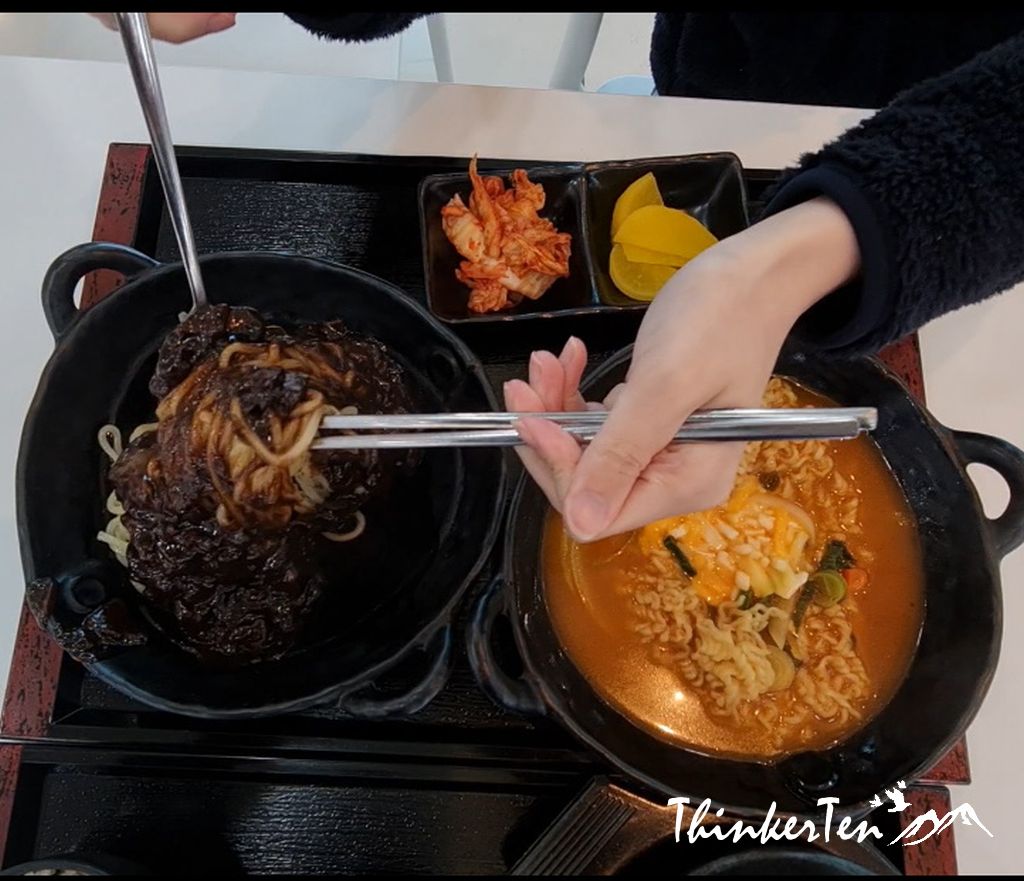

Anyway, both toilet facilities in Japan and Korea are clean and toilet paper and hand soap are provided. Still, I think the rest area in Japan is fancier and more enjoyable, also food and things sold there are the same as outside the highway.

We also fill in petrol in the rest area. Since we could not read Korean and there is no English in the machine, we have to call the staff to help us to fill in the petrol. We asked him to fill up 50000 won (SGD 50) for us, which is almost full tank after 2 days of driving from Incheon Airport to Suwon, Buyeo, Jeonju, and now Gyeongju.

How is the traffic condition on Korea Highway?
If you are coming from Seoul, the distance is about 330km to Gwangju, about 4-5 hour drive. Traffic on the Korean highway can be quite hectic, especially during the holiday season. Traffic conditions can vary depending on the time of day, day of the week, and season. Our drive to Gwangju is pretty smooth. But the traffic is quite bad on our last day when we drove back to Incheon near Seoul.
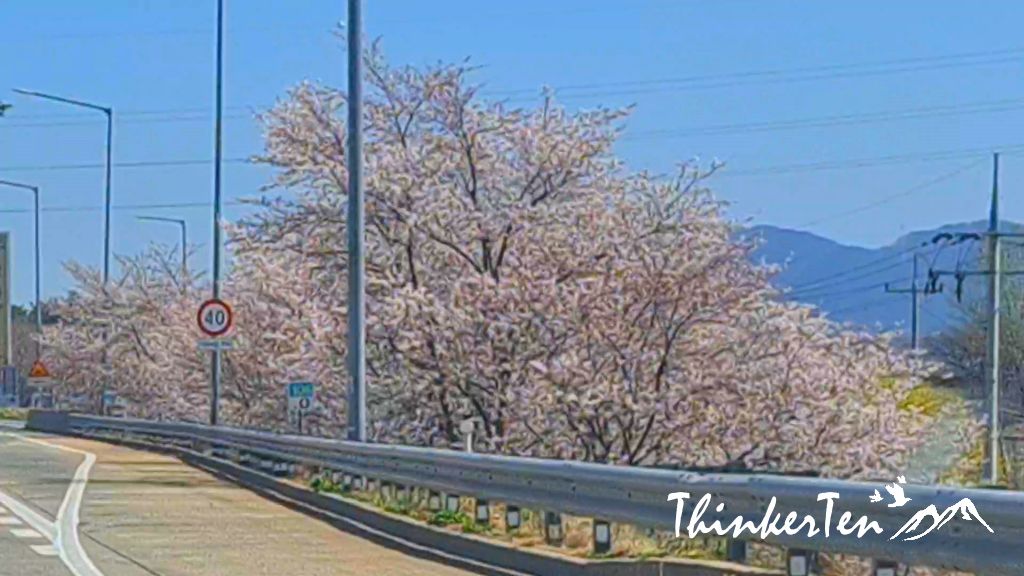
Why Gyeongju is the best spot for Cherry blossom viewing?
I was quite shocked to see so many cherry blossom trees when our car was approaching Gyeongju City on the highway.
Gyeongju has many cherry blossom trees because they were originally imported from Japan during the early 20th century. The trees were brought to South Korea as a gift from Japan and were planted in various parts of the country, including Gyeongju.

Cherry blossoms, known as “sakura” in Japanese are highly regarded in both cultures as a symbol of beauty, renewal, and the fleeting nature of life. The blossoms typically bloom in late March or early April, and their delicate pink and white petals are a sight to behold.
In Gyeongju, the cherry blossom trees can be found in various locations, such as parks, along roadsides, and near historical sites. Some of the most popular places to view the cherry blossoms in Gyeongju include Bomun Lake, the Wolji Pond, and the Gyeongju National Museum.

The cherry blossoms are highly anticipated by locals and tourists alike, and many people plan trips to Gyeongju specifically to see the blossoms in full bloom. The annual Gyeongju Cherry Blossom Marathon, held in early April, is another popular event that attracts runners and spectators from around the world.
Top places to visit in Gyeongju

Bulguksa Temple
A UNESCO World Heritage Site, Bulguksa Temple is one of the most famous Buddhist temples in South Korea. It was built during the Silla Dynasty and is known for its beautiful architecture, including the Seokgatap and Dabotap pagodas. This is my second time visiting here, simply a beautiful place for photography, with lots of colorful lanterns hung throughout the temple. Lanterns serve as a reminder of the importance of wisdom and enlightenment in Buddhism. They also add to the serene and peaceful atmosphere of the temple, creating a truly awe-inspiring experience for visitors.

If you are visiting during the cherry blossom period, please walk over to the other side of Bulguksa Temple, there is a huge cherry blossom park that is filled with cherry blossom trees.

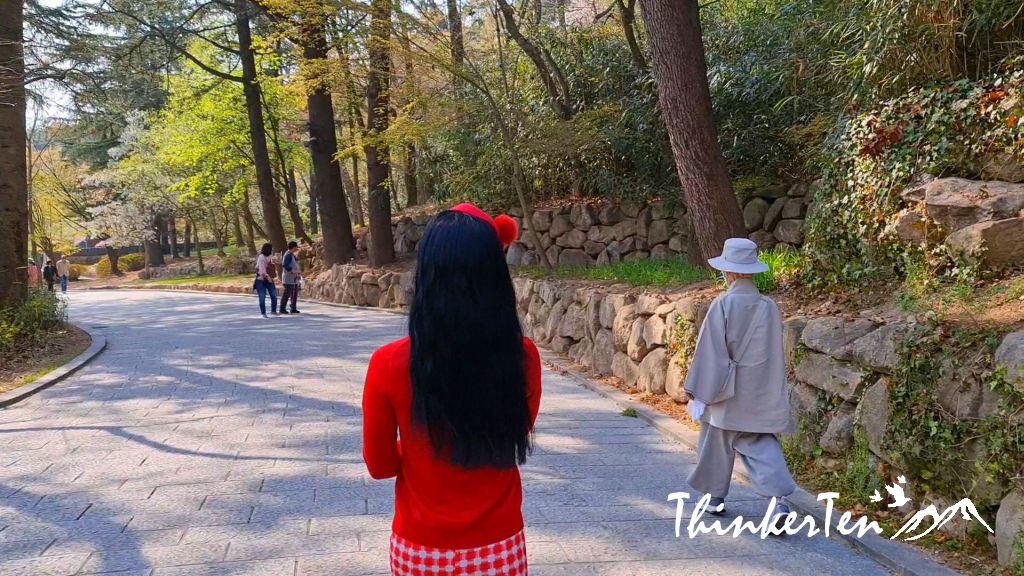


Seokguram Grotto
Also a UNESCO World Heritage Site, the Seokguram Grotto is a stone temple that houses a statue of the Buddha. The temple was built in the 8th century and is considered one of the finest examples of Buddhist art in the world. It is an hour’s drive from Bulguksa Temple.



Cheomseongdae Observatory
This ancient astronomical observatory was built during the Silla Dynasty and is one of the oldest surviving observatories in East Asia. It is a popular tourist attraction and a symbol of Gyeongju’s scientific and cultural heritage.



Our hotel is located within walking distance of Cheomseongdae Observatory. The Cheomseongdae Observatory was used for observing and studying the stars, and moon, an important tool for calculating time, predicting seasons, and determining auspicious days for various events such as ceremonies and agricultural activities. The observatory consists of a cylindrical stone tower that is 9.4 meters tall and 5.7 meters in diameter, with 27 layers of stones forming its structure.

Anapji Pond
A beautiful artificial pond built during the Silla Dynasty, Anapji Pond is known for its scenic beauty and historical significance. The pond was originally built as a pleasure garden for the Silla kings and has been restored and preserved as a tourist attraction.

Gyeongju National Museum
This museum houses a vast collection of artifacts and relics from the Silla Dynasty, including pottery, jewelry, and weapons. It is a must-visit destination for history buffs and anyone interested in Korean culture and heritage.

Tumuli Park
This park contains dozens of ancient burial mounds, including the Cheonmachong Tomb, which was discovered in the 1970s and contains a wealth of artifacts from the Silla Dynasty.

Yangdong Folk Village
A UNESCO World Heritage Site, the Yangdong Folk Village is a traditional Korean village that has been preserved for over 500 years. It is a fascinating glimpse into traditional Korean culture and architecture.
Some of the food we tried in Gyeongju.

Gyeongju Coin pancake
Gyeongju Coin Pancake, also known as “Hwangnam-ppang” (황남빵) is a popular Korean street food that originated in the city of Gyeongju, which was the ancient capital of the Silla Kingdom.

The pancake is made by filling a small disc-shaped piece of dough with sweet red bean paste and then pressing it flat. The result is a small, round, and slightly sweet pancake that is said to resemble an old Korean coin. The dough is made with wheat flour, baking powder, and water, and is cooked on a griddle until it is crispy and golden brown.
The name “Hwangnam-ppang” comes from the Hwangnam-dong district in Gyeongju, where the pancake was first created in the 1930s. Today, the pancake is a popular souvenir item for visitors to Gyeongju and can be found in street vendors and specialty shops throughout the city.

Milmyeon (밀면)
Milmyeon is a type of Korean noodle dish that is particularly popular in the city of Busan. But we had it here in Gyeongju. Busan is only 1-2 hour drive from Gyeongju.
It consists of thin, wheat-based noodles that are typically served cold with a spicy and tangy sauce made from chili paste, vinegar, and other seasonings. The noodles are often topped with sliced beef, cucumber, and pear, and are typically served with a side of soup made from beef broth.
Milmyeon can be enjoyed as a refreshing and filling meal, especially on hot summer days. We simply love it and regretted not ordering more.

We also ordered the beef pancake and the ox bone broth.

Korean Supermarket
We love to explore local supermarkets when we travel, as it can be a great way to explore new flavors and ingredients, and to discover the diverse cuisine of Korea. There is a huge local supermarket just next to our hotel. Things are pretty cheap as compared to convenience stores, plastic bags are charged so please bring along your own recycling bags.

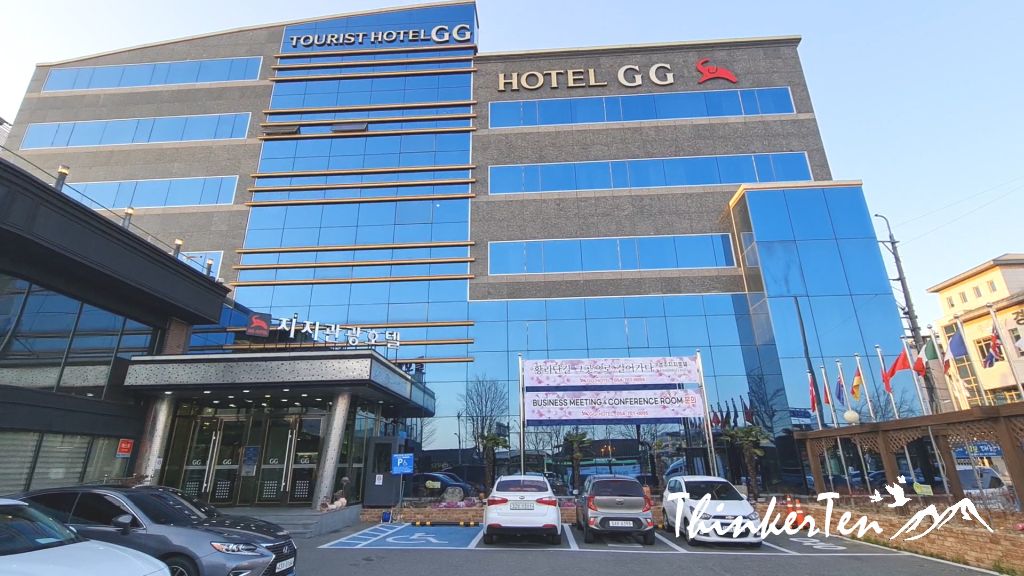
Where to stay in Gyeongju? Hotel GG GyeongJu
We stay in Hotel GG, the check-in time is 3 pm. We arrived at around 1 pm, put our luggage on the counter, and explored Gyeongju City.
It is only walking distance to major sights here, an ideal location. Nearby there are a lot of restaurants to try.


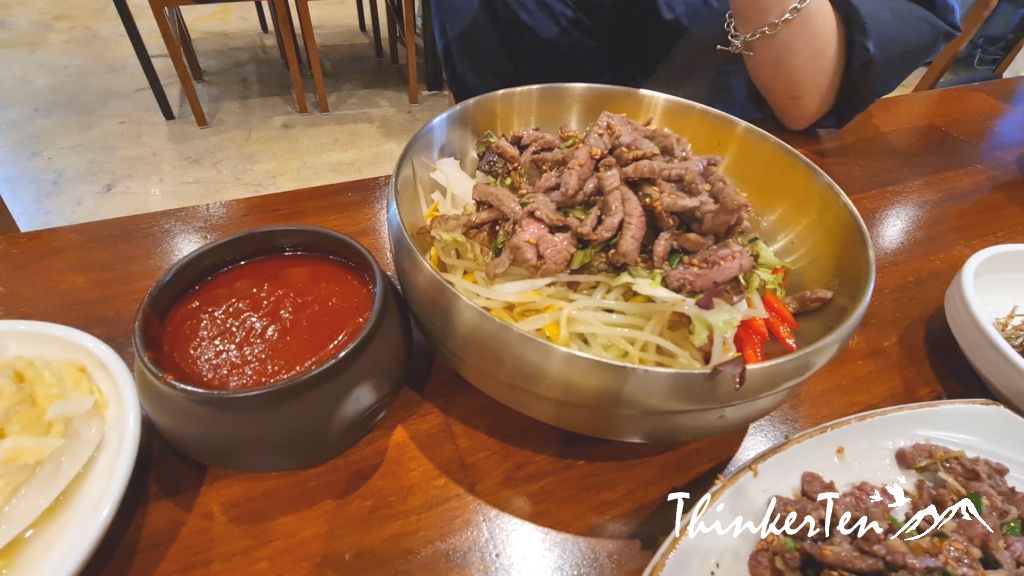
Because we could not read Korean, we ordered some beef but when the dish arrived on our table we were so shocked because it was raw, uncooked raw beef. Luckily the table next to us speak English and asked the staff to help us cook it so that we could eat it. We don’t dare to try out raw beef because we still have a few more days to stay in Korea, we don’t want to have our stomachs upset as yet.

Hotel Review




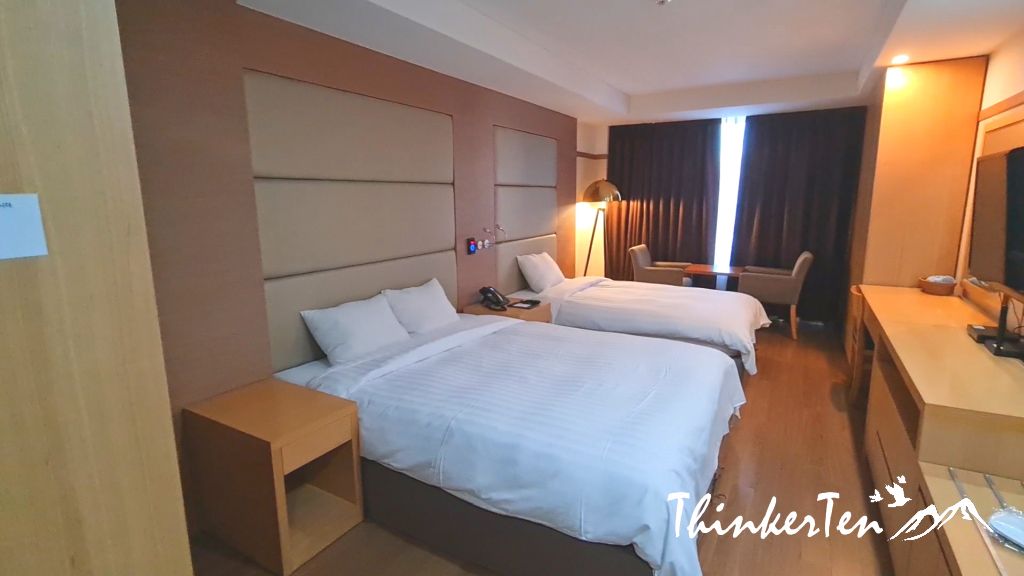

Breakfast is provided but very simple food, don’t expect a fancy Korean breakfast. There are free parking lots in front of the hotel and in the basement.

Final thoughts
There are many types of cherry blossom trees, the white and pink ones. The cherry blossom here in Gyeongju City is mainly in white color. It is pretty amazing to see the whole city decorated with cherry blossom trees. Choose the right time to visit Gyeongju and it won’t disappoint you. Renting a hanbok would be lovely.

How many days should you stay in Gyeongju? Well, 2-3 nights are good to explore this historical and beautiful city.

